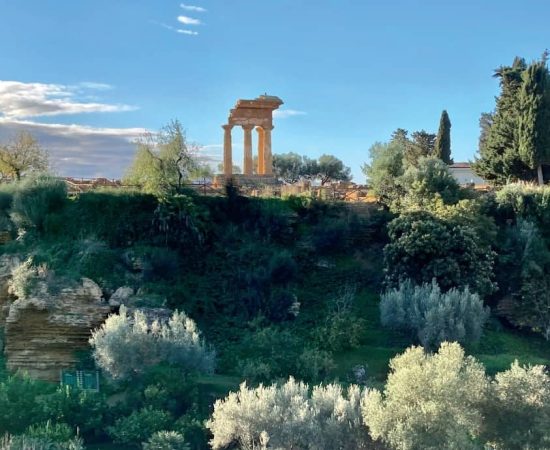
Giardino della Kolymbethra
An earthly paradise in the heart of the Valley of the Temples
Kolymbethra Garden is a rare archaeological and agricultural jewel; an extraordinary place that encapsulates the colours, flavours and aromas of Sicily and – through its archaeological finds and its hypogea, excavated 2500 years ago – tells the story of ancient Akragas, the city now called Agrigento.
Located in Agrigento, Kolymbethra Garden is a shaded corner of paradise, where centuries-old olive trees prosper and where the citrus fruits flood the Valley of the Temples with their fragrances. An embodiment of the promised land and an exceptional garden, where nature is fused with history, this little valley is a significant part of Akragas, the city founded by the Greeks in the 6th century B.C. Diodorus Siculus describes how, in 480 B.C., to supply the city with water, the tyrant Therone commissioned the planning of a network of tunnels that came to an end at the foot of the urbe in a large basin called Kolymbethra, meaning “with a perimeter of seven stadia”, which was soon converted into a fish farm and frequented by swans and birds. Crucially, the project transformed a piece of the arid Sicilian countryside into a blossoming garden of Mediterranean foliage.
In later centuries, this bona fide “garden of delights” came to be owned by the Church, which introduced citrus trees. Its golden age came in the 19th century, when it became a must-see stop-off on the Grand Tour. In the final decades of the 20th century, due to the disappearance of the old farmworkers, Kolymbethra fell into rack and ruin, until it was rescued by FAI, which reinstated its former splendour. The garden is now a worthy adjunct to a visit to the evocative Archaeology Park nearby, and a thrill for the five senses: from the aroma of the orange blossom to the flavour of the almonds, from the silvery tint of the olive trees to the moisture of the soil, all accompanied by the delicate sound of water constantly flowing in the background. No visit is complete without a trip along the new routes to the hypogea (underground chambers), which are of great interest in terms of archaeology, speleology and the natural environment.
Donate to the annual project
Share this page:
Discover our membership options and join the Friends of FAI community

